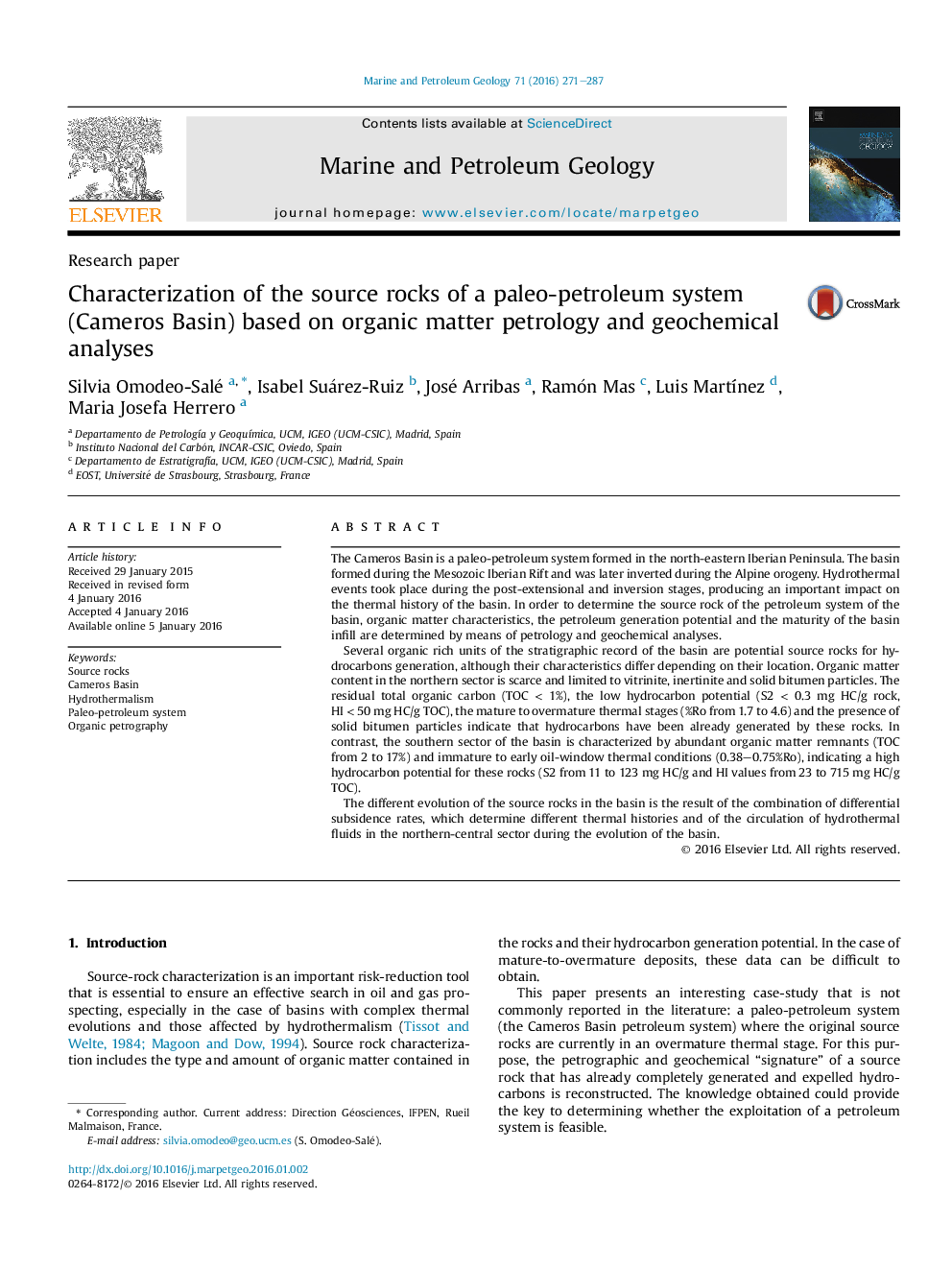| Article ID | Journal | Published Year | Pages | File Type |
|---|---|---|---|---|
| 4695430 | Marine and Petroleum Geology | 2016 | 17 Pages |
•Amount and type of organic matter deposited and preserved is reconstructed.•Potential and spent source rocks of the paleo-petroleum system are identified.•Effects of the hydrothermalism on organic matter preservation are determined.•Preservation of the organic matter is linked with the basin burial/tectonic evolution.
The Cameros Basin is a paleo-petroleum system formed in the north-eastern Iberian Peninsula. The basin formed during the Mesozoic Iberian Rift and was later inverted during the Alpine orogeny. Hydrothermal events took place during the post-extensional and inversion stages, producing an important impact on the thermal history of the basin. In order to determine the source rock of the petroleum system of the basin, organic matter characteristics, the petroleum generation potential and the maturity of the basin infill are determined by means of petrology and geochemical analyses.Several organic rich units of the stratigraphic record of the basin are potential source rocks for hydrocarbons generation, although their characteristics differ depending on their location. Organic matter content in the northern sector is scarce and limited to vitrinite, inertinite and solid bitumen particles. The residual total organic carbon (TOC < 1%), the low hydrocarbon potential (S2 < 0.3 mg HC/g rock, HI < 50 mg HC/g TOC), the mature to overmature thermal stages (%Ro from 1.7 to 4.6) and the presence of solid bitumen particles indicate that hydrocarbons have been already generated by these rocks. In contrast, the southern sector of the basin is characterized by abundant organic matter remnants (TOC from 2 to 17%) and immature to early oil-window thermal conditions (0.38–0.75%Ro), indicating a high hydrocarbon potential for these rocks (S2 from 11 to 123 mg HC/g and HI values from 23 to 715 mg HC/g TOC).The different evolution of the source rocks in the basin is the result of the combination of differential subsidence rates, which determine different thermal histories and of the circulation of hydrothermal fluids in the northern-central sector during the evolution of the basin.
Graphical abstractFigure optionsDownload full-size imageDownload as PowerPoint slide
